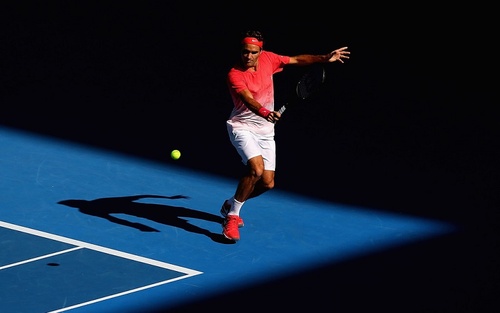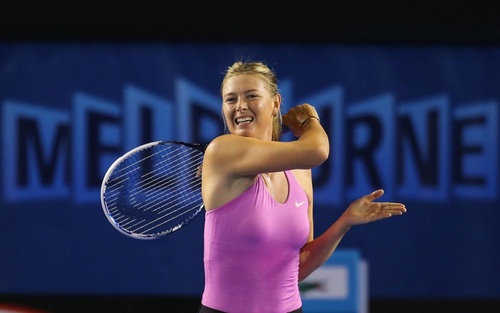Don't miss any stories → Follow Tennis View
FollowCourting Controversy: The Debate over Melbourne Court Speed
There’s been an unusual amount of talk about the speed of the courts at this year’s Australian Open. By all accounts, they’re a lot faster than they were at this stage last year. Confusion still reigns among many of the players as to why tournament organizers would make the courts faster and the rallies shorter. Players used to the slower hard courts previously at Melbourne Park had to scramble to register plenty of practice time before the tournament starts.
It’s a rather peculiar trait of hard courts. How two courts, seemingly of the same surface, can be so different in speed is determined by the quantity and grain size of the sand mixed in with the paint’s topcoat applied to the court. A greater amount of sand or a larger size of grains leads to more friction with the bouncing tennis ball, slowing the ball and making the court slower. Similarly, a smaller amount of sand and smaller granules in the paint leads to less friction with the ball, making a court faster.
In their pre-tournament media conferences over the weekend, some players seemed to exude a mixture of confusion and frustration over the court speeds, while others were delighted with it. Roger Federer, who is known to like the faster courts, endorsed the pace at Melbourne Park this year.

“The other night against Jo, things clearly slowed down in the night time,” said Federer. “It's not going to be 40 degrees [Celsius] at nighttime either, so the ball's going to slow down. For that reason you need a faster-paced court just to help the guys who want to play for a little bit more.”
Heavy-hitting Aussie Samantha Stosur also gave her approval to the quicker paced courts. “I've preferred hitting with it so far and practicing obviously in the pre-season with it,” she commented. “Like I said, it would definitely allow players to hit a few more winners.”
However, other players who play a game more suited to a slower court were perplexed by the speed of the courts at Melbourne Park. The king of the slowest surface on the tour, world No. 1 Rafael Nadal appeared mystified by the decision to quicken up the pace of the courts
“Well, I really don't understand very well why they change because the last couple of years, Australian Open had amazing matches, long ones, good ones for the crowd,” observed Nadal. “I don't know why the people decided to make the conditions that fast. I am not sure it’s the best thing for the show. But they decide and I'm just a player to try to be competitive from the beginning.”
2008 champion Maria Sharapova also appeared mystified on the topic. “I heard the outside courts are a bit faster than some of the main show courts,” she mentioned. “I'm not sure why there's not more consistency in terms of all the events having the same speed.”

In that answer, Sharapova also brought up another issue with the pace of the courts and the consistency among events. Federer admitted that the courts in Brisbane were faster than the ones here at Melbourne Park, while Stosur acknowledged that the courts here may be marginally faster than the courts in Hobart. Whether or not the tournament organizers decided to intentionally vary the speeds of each respective court is unknown, but it is strange because the lead-up tournaments are for players to directly prepare themselves for the conditions of the actual Grand Slam.
The differing pace of the courts at Melbourne Park have caused the bulk of players to rush to register a decent amount of practice time before the tournament. Nadal indicated in his pre-tournament media conference that he was practicing harder and longer particularly because of the change of court conditions.
“I am practicing every day as much as I can and with the right intensity, the right attitude,” Nadal insisted. “I arrived one week before. I think that I am practicing better a little bit every day. I hope to adjust my game to these conditions.”
During the preparations, Tournament Director Craig Tiley told Fairfax Media that they had not changed the planning this year from the 2013 event in terms of court speed. He also noted that the weather conditions would ultimately play the main role in determining the true pace of the courts.
While most players agreed that the pace of the court is ultimately irrelevant if they don’t play well, it does raise questions as to why, in a game that is regulated in almost every way, there can be such discrepancies between court speeds. Even if the weather does play a large role in the speed of the surface, such abnormalities and differences are surprising.
Whether the answer lies in perhaps the ATP taking more involvement in planning tournaments, or whether a uniform version of the paint topcoat should be implemented, is undetermined. But there is a general consensus that the pace of the warm-up tournaments should reflect the pace of the major to help players prepare more effectively.










